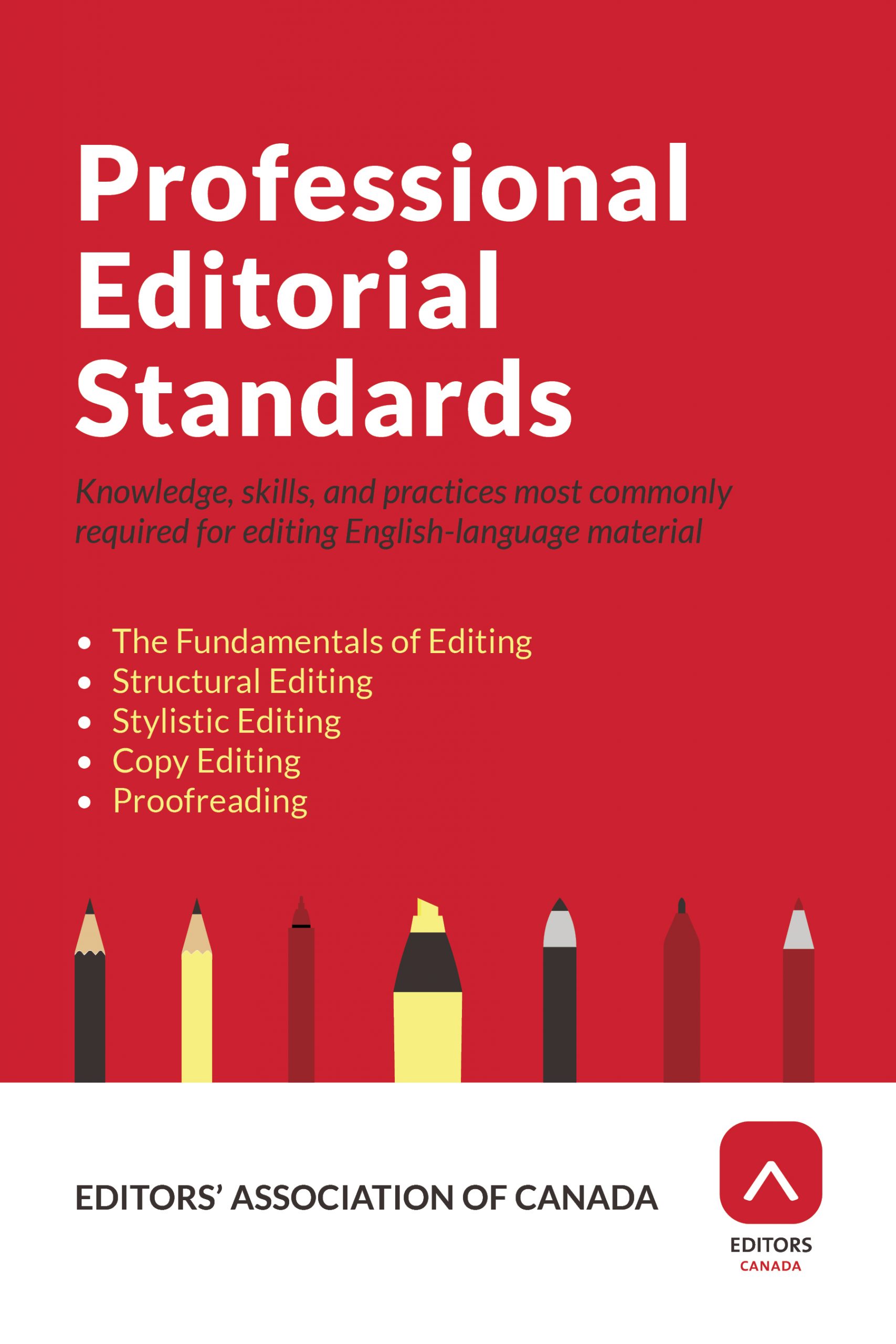
Past, Present and Future — One Editor’s Perspective
This is the second in a three-part series about my thoughts and experiences as they pertain to Editors Canada’s Professional Editorial Standards (PES) and my ongoing work with the Editors Canada standards committee. In Part 2, I’ll look at some of the ideas and issues that have come up while reviewing PES and the “questions, gaps and new perspectives” mentioned in Part 1.
Part 2: The Present
In the beginning, we had lots of ideas about what we could do with PES and what a new version could look like. Should we tailor versions for different audiences, particularly employers, educators and editors? Should we develop a plain language version? Could we create an interactive space where the standards would always be open to editors for discussion and debate?
One major concern is that other Editors Canada committees rely on PES remaining unaltered for a period of about five years after each revision. This has been the approach until now. But our job as a committee is to do this initial review and revision, yes, but also to monitor the standards and update them as necessary afterwards. How do we make this work? We decided individual standards will require backend versioning and labelling. One committee member who works with an engineering firm proposed a particular system that we will pitch to Editors Canada’s internal stakeholders.
Some questions
Looking at PES today, we have questions. Here are just a few:
- Are these stages of editing or types or levels or something else? I questioned this in 2016 and I would still argue that “stages” is not the right term.
- Isn’t important core editorial work excluded from these standards — such as acquisitions editing and production editing?
- Is narrative structure not deserving of its own subsection in Section B, Structural Editing?
- “Grammar” is mentioned only in copy editing, but isn’t grammar a fundamental of editing (and shouldn’t it be grammars to include varieties of English as Anne Curzan has said)?
Once we have a first draft of revisions, we look forward to opening it up to Editors Canada members for discussion and input on these and many other questions.
Some gaps
Editors Canada has introduced a lot of important initiatives and materials related to equity, diversity and inclusion (EDI). PES is also in need of much more thought and articulation around EDI matters (among other gaps we’ve identified); these include
- the ethical responsibilities of editors
- plain language
- accessibility
- cross-cultural communication
- empathy, integrity and sensitivity
A few recent examples of excellent online sessions I’ve attended that reinforce the need for standards related to editing with care and sensitivity are
- Gender-inclusive Editing by Alex Kapitan
- Trauma-informed Editing by Iva Cheung
- Editing Indigenous Content by Kaitlin Littlechild
Some new perspectives
COVID-19 has changed the way we work and think about work — this includes how professional editors work. Technology has enabled online teams and workflows that can operate effectively across cultures and time zones. Generally, there appears to be a push for better separation of work and life, more emphasis on mental health and recognition of burnout, and more flexibility and autonomy for workers; these are all signs of good things to come. I think this is a very exciting time to be a professional editor in Canada.
At the same time, the events of the past couple of years have challenged us in new ways, and it’s a reminder that we can never get complacent. We must be prepared for new realities and expectations — and PES should help us do that. That’s what I’ll discuss in my next and final post in this series.
___
Previous post from Berna Ozunal: Editors Canada’s Professional Editorial Standards
The Editors’ Weekly is the official blog of Editors Canada. Contact us.
Discover more from The Editors' Weekly
Subscribe to get the latest posts sent to your email.
